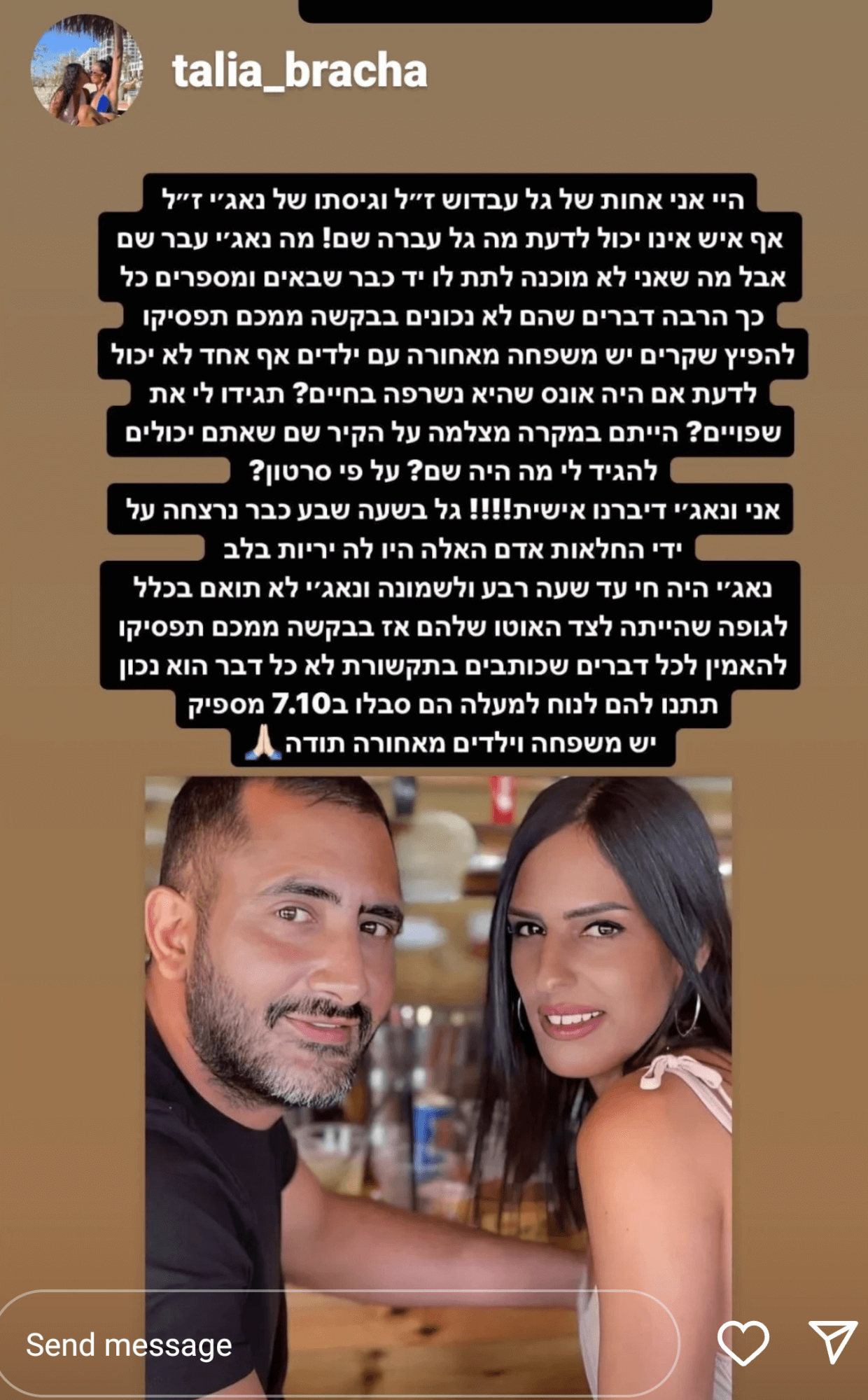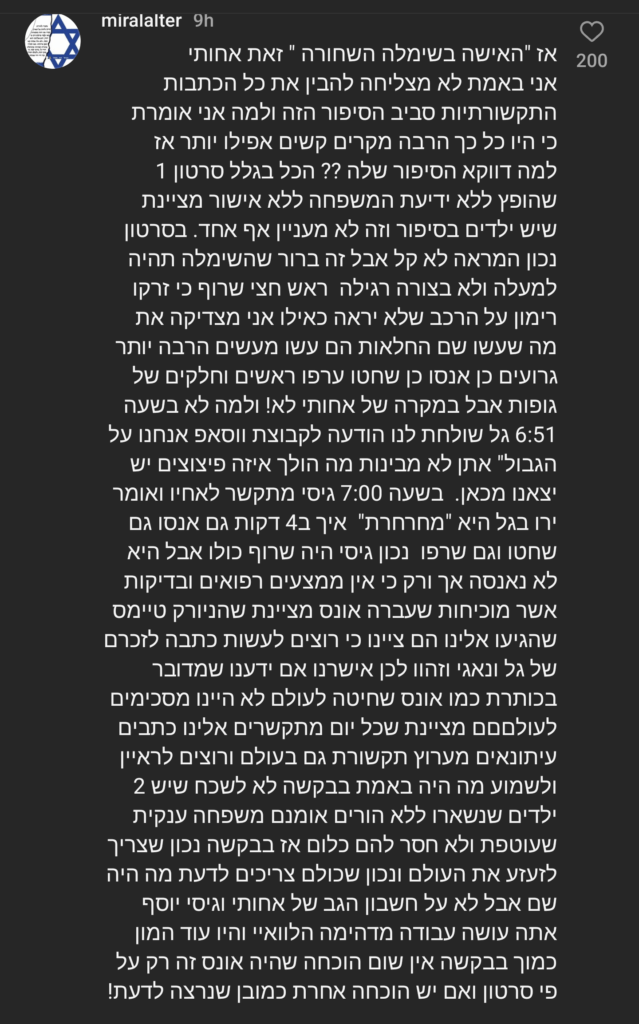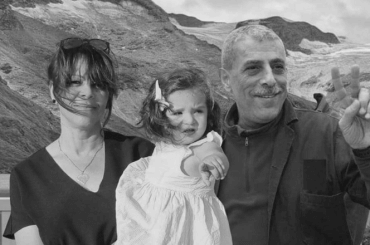On December 28, the New York Times published an “investigative” report on gender-based violence allegedly committed by Palestinians during the October 7 attack. The newspaper says the story was based on over 150 interviews conducted by Pulitzer Prize-winning reporter Jeffrey Gettleman, along with Anat Schwartz and Adam Sella. The story concludes that Hamas fighters engaged in systematic rape and sexual violence against Israeli women.
The story itself repeats October 7 testimonies that have been previously published and already debunked and discredited, but the Times investigation hinges predominantly on one central story, the story of the rape of “Gal Abdush,” who is described by the Times as “The Woman in the Black Dress.”
Although claiming its story proves that “the attacks against women were not isolated events but part of a broader pattern of gender-based violence on Oct. 7” the veracity of the New York Times story was undermined almost as soon as it was published, including from the Abdush family itself who says there is no proof Gal Abdush was raped and that the New York Times interviewed them under false pretenses.
The New York Times version of events
A heartbreaking photo of Gal Abdush’s family — a working-class Mizrahi Jewish family who lost their daughter and son-in-law, Nagi Abdush — appeared on the newspaper’s cover. The newspaper devoted a third of its report to the Abdush story. The report centered around a video that was captured on October 8 by a woman called Eden Wessely, which was published on her social media accounts. According to the Times, “The video went viral, with thousands of people responding, desperate to know if the woman in the black dress was their missing friend, sister or daughter.” The newspaper did not link to the video but released a distant, indistinct image from it that revealed nothing. It’s unclear how the Times confirmed the existence of these responses since Wessely’s Instagram account has been banned, and she created a new account in mid-December.
The newspaper narrates the tragedy of the family, how they learned about their daughter’s fate, and how the video and their daughter became known as “the woman in the black dress.” The Times states that her husband, Nagi Abdush, who was also killed, sent his last message at precisely 7:44 a.m., asking the family to take care of their children. What the newspaper omitted, and the family later confirmed, is that the husband contacted them at 7:00 a.m. and reported his wife’s death.
The Times says the family saw the video recording and “feared that she might have been raped” based on the body’s condition. The Times also states that the Israeli police used the video as evidence that rape occurred: “The videos caught the eye of Israeli officials as well — very quickly after Oct. 7 they began gathering evidence of atrocities. They included footage of Ms. Abdush’s body in a presentation made to foreign governments and media organizations, using Ms. Abdush as a representation of violence committed against women that day.”
There is currently no trace of the video on the internet despite the Times claim that it “went viral.” Moreover, the Israeli press, despite reporting on hundreds of stories about the October 7 victims, never mentioned “the woman in the black dress” even once previous to the December 28 story. It does not appear that the video had, in fact, become the widely circulated symbol the Times claimed it had. But regardless, within a day of the report being published, facts that undermined the Times story began to emerge.
‘The media invented it’
On December 29, the Israeli website ‘YNET’ published an interview with Etti Brakha, Gal Abdush’s mother. In the interview, the mother says that the family knew nothing about the sexual assault issue until the piece in the Times was published: “We didn’t know about the rape at all. We only knew after a New York Times journalist contacted us. They said they matched evidence and concluded that she had been sexually assaulted.”
Then, on January 1, Nissim Abdush, Nagi’s brother, appeared in an interview on Israeli Channel 13. During the 14-minute interview, Nissim repeatedly denied that his sister-in-law was raped. He explained that his brother Nagi had called him at 7:00 in the morning, saying his wife was killed, and he was next to her body. Then, he continued to communicate until 7:44 and never mentioned anything related to sexual assault. Nissim also stated that no official party informed them of these doubts or this investigation, neither the police nor forensic experts. In the interview, Abdush reiterated that his brother’s wife was not raped and that “the media invented it.”
Gal’s sisters also denied allegations of rape. Her sister, Tali Barakha, posted on Instagram, “No one can know what Gal went through there! Also, what Nagi went through, but I can’t cooperate with those who say many things that are not true. I plead with you to stop spreading lies, there is a family and children behind them, no one can know if there was rape or if she was burned while alive. Have you gone mad? I spoke to Nagi personally! At 7 o’clock, Gal was killed by those animals, and they shot her in the heart. Nagi was alive until quarter past eight…”

Likewise, Miral Altar, Gals’ sister, wrote a comment on Instagram in response to a video of a hasbara account. Altar said, “I can’t understand all these reports. There were many difficult stories, why this story in particular? It’s based on only one video published without the family’s knowledge…It is true that the scenes in the video are not easy, but it’s clear that the dress is lifted upwards and not in its natural state, and half her head is burned because they threw a grenade at the car. I don’t want to be understood as if I’m justifying what they did; they are animals, they raped and beheaded people, but in my sister’s case, this is not true. At 6:51, Gal sent us a message on WhatsApp saying ‘we are at the border, and you can’t imagine sounds of explosions around us.’ At 7 o’clock, my brother-in-law called his brother and said they shot Gal and she’s dying. It doesn’t make any sense that in four minutes, they raped her, slaughtered her, and burned her?”

Other comments from Abdush family friends and relatives (whose relationships have been confirmed through social media connections) also suggest that the “Woman in the Black Dress” video itself lacks enough information to support the claim of rape.
Shiran Maluka, Miral’s friend, wrote: “Based on what does Eden Wessely conclude that she was raped? Based on the video she took, there is no evidence, it’s not true that half of her body was burned, only her face, and there is nothing but a dress pulled up.” Another friend, Almog Peretz Hemo, wrote a similar comment.
Many of the comments from those in and around the Abdush family point to the role of Eden Wessely in pushing the rape allegations. Although Wessely’s quotes in the Times didn’t contain a graphic description, her following statements to the Israeli media were very explicit and clearly stated that Abdush was raped, burned, and murdered. Those pushed back on the story seem to believe that it was, in fact, Eden Wessely’s testimony and personal interpretation that initially raised these allegations of sexual violence rather than the video itself. They argue that Wessely’s testimony is inaccurate, and does not match with what’s seen in the video.
A look at Eden Wessely’s Facebook account reveals extreme right-wing opinions.
For example, in the early days of the war, Wessely posted fake news, debunked by the Israeli media, about “Israeli traitors who supported Hamas fighters during the attack on October 7th.” Wessely also shared many posts by the extreme right-wing organization, Im Tirtzu, and posts by the far-right rapper, Hatzel, considered a symbol of Israeli fascist racism. In another post, Wessely shared a picture of the Israeli human rights lawyer Lea Tsemel, calling her “the devil incarnate.”
Weaponizing ‘the woman in the black dress’
The family’s testimonies unmistakably confirm that the Israeli authorities did not have the decency to inform the family about the investigation into their family member’s rape. But, three months following her death, Israeli authorities and the Israeli police are weaponizing her case and using the death of Gal Abdush as propaganda material to garner support for and justify the genocide against the Palestinians in Gaza.
Likewise, the New York Times also joined in exploiting the family in a highly unethical manner. Despite mentioning the element of rape to the family, the Times reporters did not make clear this was the focus of the story and evidently got them to agree to participate by saying they wanted to cover the family’s tragedy. According to Abdush’s sister, Miral Alter, this is why the family agreed to speak to the reporter. As Alter explains in the Instagram comment above, the Times reporters “mentioned they want to write a report in memory of Gal, and that’s it. If we knew that the title would be about rape and butchery, we’d never accept that.”
In the end, it appears that the New York Times manipulated a working-class Mizrahi family in the service of Israeli hasbara in order to score a journalistic achievement, which in reality is nothing more than a repetition of fake news and government propaganda.
Editor’s note: this article was edited for minor typographical errors on January 30, 2024.



Well, we know the NYT, is capable, don’t we? Judith Miller of Iraqi WMDs fame would be proud.
This is so vile. The “paper of record”, actually stoking the conflict that will have tragic consequences not only for Palestinians but Israelis also. Not to mention worsening the trauma for the family of the woman killed on October 7th.
Washington Post erases Israeli minister’s farfetched October 7 rape claim at his request
A note explaining the retraction of the claim that Hamas militants had specific orders as to “which commander should rape which soldiers” indicates the publication censored itself at the behest of the Israeli government.The Washington Post has quietly removed an outlandish claim by Israeli Defense Minister Yoav Gallant that Hamas battle plans included specific instructions on which Israeli troops should be raped during their October 7 incursion.
In the original article, which was published on November 12 and promoted as a Washington Post “exclusive,” Gallant is quoted as telling the outlet: “We know from interrogations that Hamas came in with detailed plans of their attack, including which commander should rape which soldiers in different places.”
A day later, the allegation disappeared from the piece, which had been amended to include the following “correction”:
“A previous version of this article included a quote from Israeli Defense Minister Yoav Gallant that was not authorized for publication. The quote has been removed.”
The act of self-censorship was seemingly first spotted by a social media user who suggested that the embarrassing incident was the result of what they described as “the Israeli way” of propaganda: “Privately lying to a journalist to shape her coverage, then scrambling to correct the record when the journalist accidentally prints the lies you told her in confidence.”
https://thegrayzone.com/2024/01/03/washington-post-erases-israels-request/
What Hamas actually did was bad enough. No need to fabricate more.
Today everyone carries a powerful camera in their pocket. So where are the photos?
Witness to Hamas Rape Targeted by Antisemites and Accused of Lying
… he expressed frustration and asked why people who speak out about the rapes perpetrated by Hamas should be criticized at all.
“Why are we being criticized for telling about the rapes? Is it because there’s no documentation, so it means it didn’t happen?”
However, forensic evidence has proved that bodies showed signs of sexual assault, including broken hips, legs, bloodied groins and genital mutilation.
In addition, doctors examining the released hostages reported that many of the hostages, both male and female, had been sexually assaulted.
Raz Cohen witnessed the gang rape of a woman while he was hiding in the bushes.
“About 40 seconds after we arrived at the bush, a white van arrived, from which four or five terrorists emerged,” Raz recounted.
“They caught someone; I don’t know if they pulled her out of the van itself or if they stopped the van close to them. Hiding in the leaves and branches meant I couldn’t see what they did in detail, but when you see rape taking place, you understand that it’s rape.”
Raz Cohen continued, “They took off her pants; the terrorists formed a semi-circle around her, holding her so she wouldn’t move, and one of them made motions akin to those of rape. All of this lasted about a minute, and at some point, one of the terrorists pulled out a knife and stabbed her. I could see she was no longer moving, and then he continued raping her for some time after he had already murdered her.”
“Evidently the stomach-turning images millions have already seen online – a dead woman, lying with her skirt pulled above her waist and no underwear on; the young woman bundled out of a truck in the Gaza Strip, the crotch of her jogging bottoms soaked in blood – aren’t enough for some.” Refer
Whatever your view of the Israel-Hamas war, rape is rape. To trivialise it is to diminish ourselves
The defence of crimes that were most likely committed but are difficult to prove is obscene and typical of Mondoweiss as it goes about justifying the barbarity of Hamas terrorists.